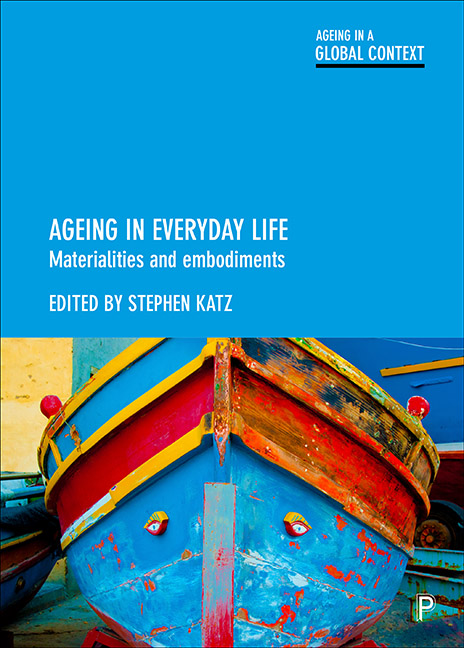Four - The ever-breaking wave of everyday life: animating ageing movement-space
Published online by Cambridge University Press: 22 April 2022
Summary
Introduction
As part of the cultural turn in social gerontology, scholars have paid attention to older people's everyday lives. Digging down to establish the underlying structures, mechanisms and meanings involved, they have focused, for example, on the roles of socio-cultural frames, technologies and institutional practices. Within this emerging tradition, scholars have also started to consider critically and conceptually such things as mobilities, embodiments and the negotiation of space, which has lent research in this area a far better appreciation of how everyday lives are felt and negotiated (see, for example, Katz, 2000; Twigg and Martin, 2015). While acknowledging this academic progress, this chapter suggests how scholars might take a step further. In particular, it looks to the discipline of human geography for inspiration. Building on earlier introductions and reconnaissance (see McHugh, 2009; Andrews et al, 2013; Andrews and Grenier, 2015; Skinner et al, 2015), it describes further how, as an approach, non-representational theory (NRT) might provide a more immediate engagement with, and animation of, the movements in older people's everyday lives.
The chapter starts with a review of how movement has traditionally been understood and researched across gerontology. It then describes NRT and its key idea of ‘movement-space’, and develops this concept further in the context of ageing. Indeed, it is argued that five core qualities – rhythm, momentum, vitality, infectiousness and encounter – constitute ‘ageing movement-space’, a conceptualisation that could contribute to an altogether livelier brand of social gerontology. For each of these qualities, connections are made to the most relevant existing ideas and debates across gerontology. In addition, a fictional vignette is provided under each quality to illustrate it in action. The chapter concludes with some thoughts about some of the creative methodological uses to which NRT can be put moving forward.
Traditional perspectives on movement in gerontology: from a determinant of health and wellbeing to a meaningful experience
Gerontologists have, on one level, engaged empirically with the movement of older people as if it were a social determinant of their health and wellbeing, or at least as something with important ramifications for them as well as for social systems and policy. This realisation is common across six substantive fields of inquiry.
- Type
- Chapter
- Information
- Ageing in Everyday LifeMaterialities and Embodiments, pp. 63 - 82Publisher: Bristol University PressPrint publication year: 2018



